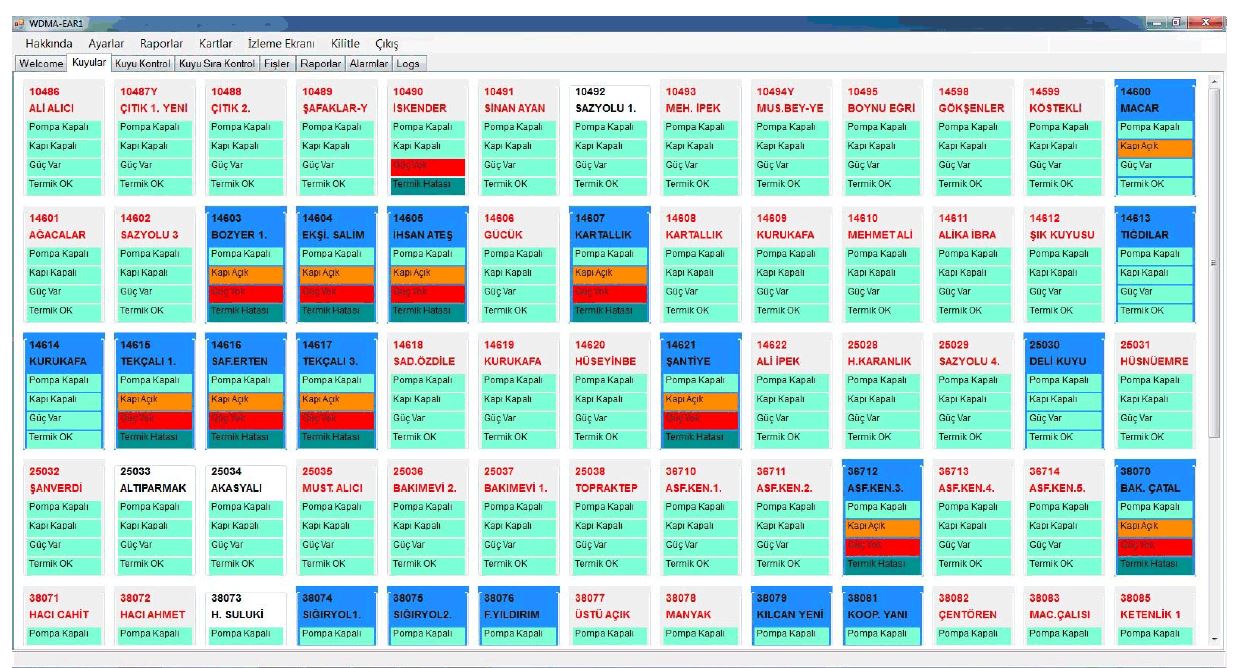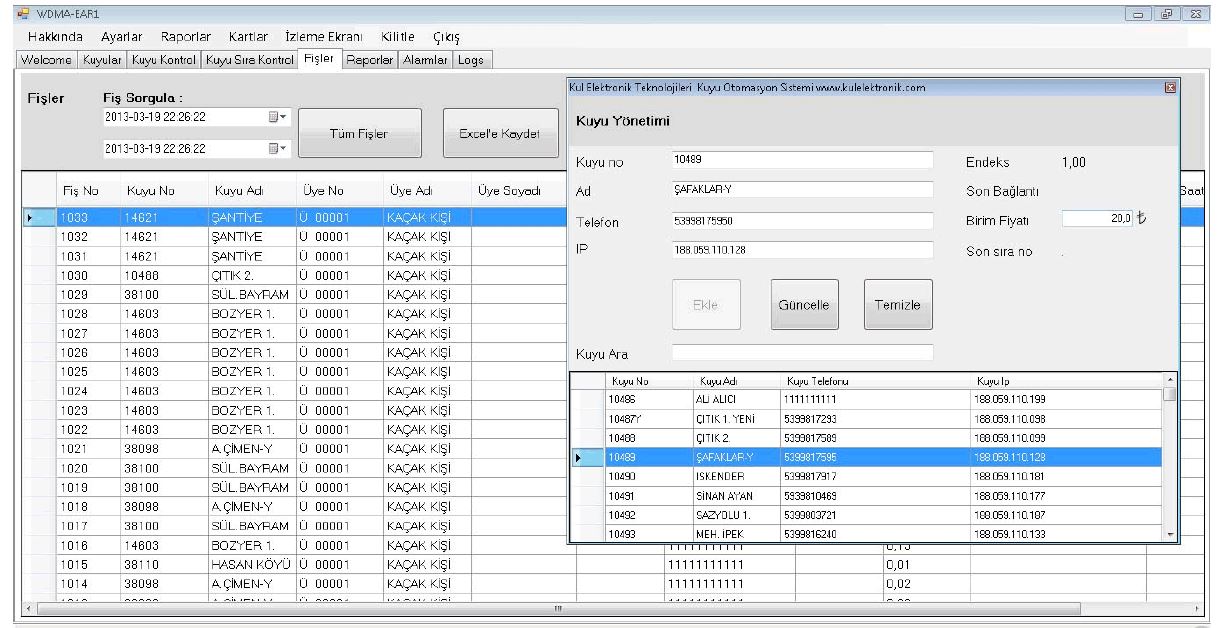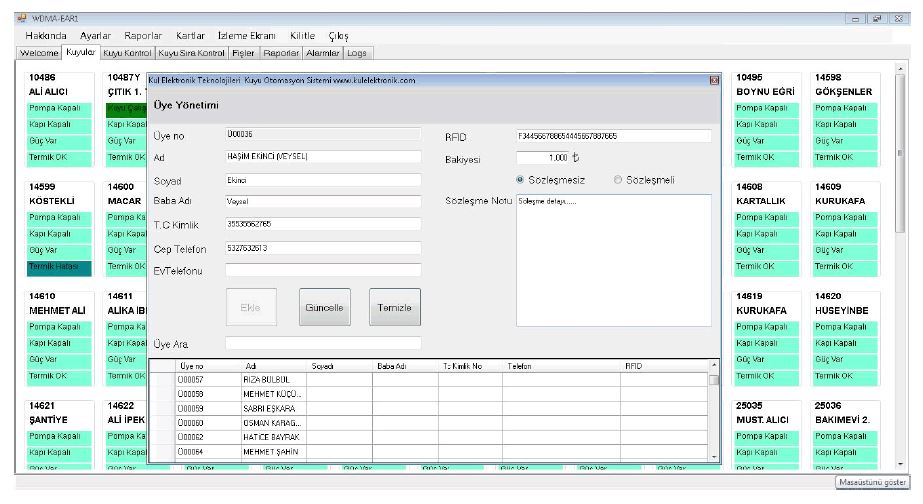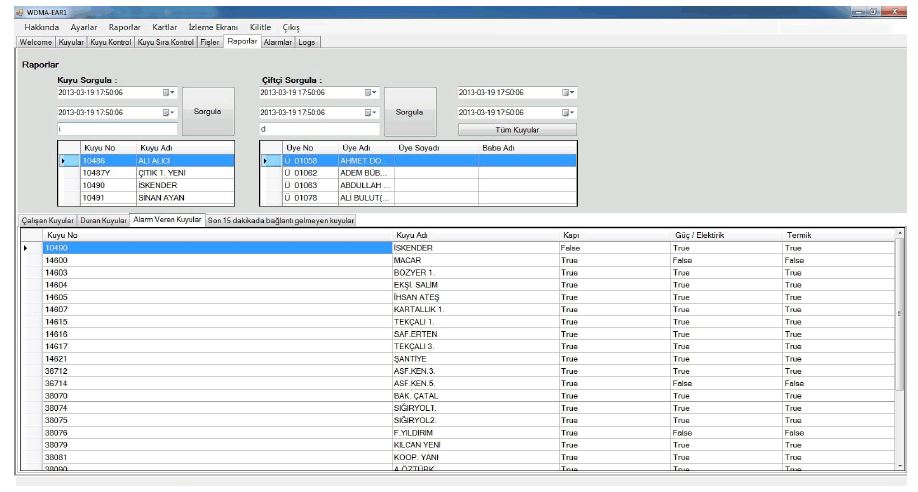Groundwater Inspection and Irrigation Wells Management / Monitoring System
WDMA is a system structured to ensure the controlled use of groundwater, to control which producer will irrigate how much, to measure the amount of electricity and water consumed during irrigation, to provide irrigation facilities equal to TL loaded on smart cards, and to ensure the safety of irrigation wells.
Usage Areas

Patent
TR201215522
All Rights are Reserved.
Key Features
- GSM 850 Mhz / DCS 1800 Mhz / EGSM 900 Mhz / PCS 1900 Mhz
- Can be connected directly to 12VDC battery and solar panel or external standby (It charges the battery via solar panel or external supply.)
- Connecting to external electricity meter and water meter with MODBUS RTU
- Smart card reader input
- Pump, Thermal, Door, Motion, fire/smoke dry contact inputs
- SD / MMC logging (optional)
- Frame Camera connection(640x480)(optional)
- Temperature Sensor: 0.5°C tolerance from -55 to +125 (optional)
- Humidity/Humidity Sensor: Relative humidity reading between 5%-95%.
- digital real time clock
- For wind speed measurement (via Anemometer) (optional)
- Flow sensor (optional)
- PIR Motion detection sensor (optional)
- Smoke Sensor (optional)
- Fire Sensor (optional)
- Sending and receiving data with GPRS Class 10 protocol
- Graphic LCD display(128x64) and keypad with 29 keys. numeric +alphabetical
- 2 Channel 240VAC/10A dry contact relay output
- Push - Push SIM slot
- 90°C GSM Antenna
Groundwater Inspection and Irrigation Wells Management / Monitoring System
Irrigation in agriculture is the delivery of water, which the plant needs and cannot be met by precipitation, to the root zone of the plant in the soil at the required place and time. The main principle in irrigation is to distribute the water brought up to the head of the field uniformly to the whole field with minimum loss. There are many systems for irrigation. Choosing one of these irrigation systems depends on the level of the field, the type of crop grown, the chemical and physical properties of the soil, the amount and quality of irrigation water, the habits of the farmers, the economic situation of the farmers there and the wind, temperature, relative humidity of the region, due to the fact that some irrigation methods require additional investment. It depends on climatic conditions such as precipitation. Although all irrigation systems can be applied in leveled lands, sprinkler irrigation should be preferred in unleveled lands, and a more suitable irrigation system should be preferred instead of sprinkler irrigation system in an area with strong prevailing winds.
|
WDMA is a system structured to ensure the controlled use of groundwater, to control which producer will irrigate how much, to measure the amount of electricity and water consumed during irrigation, to provide irrigation facilities equal to TL loaded on smart cards, and to ensure the safety of irrigation wells. Ability to irrigate and prevent unauthorized use by pre-loading smart cards, |
 |




